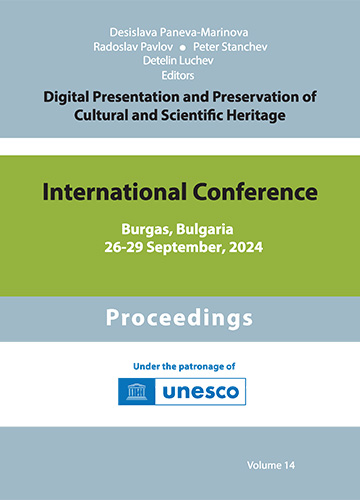Intangible Cultural Heritage Presentation and Preservation – Challenges and Opportunities for Museum Specialists
DOI:
https://doi.org/10.55630/dipp.2020.10.19Keywords:
Intangible Cultural Heritage (ICH), ICH Digitisation, Safeguarding, Museum Specialists’ CompetenciesAbstract
Intangible Cultural Heritage (ICH) is a term invented to represent living practices, representations, expressions, skills and knowledge that communities, groups and individuals recognize as distinct but important aspects of identity. The safeguarding of ICH has become a topic of international concern primarily through the work of UNESCO (United Nations Educational, Scientific and Cultural Organization) (UNESCO, 2018). Digital technologies and the internet bring unprecedented opportunities to present and preserve cultural assets globally and from a long-term perspective. The use of new technologies in the preservation and transmission of intangible heritage imposes urgent and significant changes in the museum specialists' competency matrix. The paper presents the main results from research conducted within the scope of the international project DigiCult in four European countries, aiming to identify the main gaps and constraints regarding the active inclusion of museum professionals in the ICH digital presentation and safeguarding processes.References
Alivizatou-Barakou, M., Kitsikidis, A., Tsalakanidou, F., Dimitropoulos, K., & Giannis, C. (2019). Intangible Cultural Heritage and New Technologies: Challenges and Opportunities for Cultural Preservation and Development. Mixed Reality and Gamification for Cultural Heritage, Springer International Publishing , 129-158.
Dochev, D., Pavlov, R., Paneva-Marinova, D., & Pavlova, L. (2019). Towards Modeling of Digital Ecosystems for Cultural Heritage. Digital Presentation and Preservation of Cultural and Scientific Heritage, 9, 77-88. IMI-BAS
European Commission. (2010). A Digital Agenda for Europe . Retrieved from https://eur-lex.europa.eu/legalcontent/EN/TXT/HTML/?uri=CELEX:52010DC0245&from=en
European Commission. (2016). Implementation of Commission Recommendation on the digitisation and online accessibility of cultural material and digital preservation. Progress Report 2013-2015. Retrieved from https://ec.europa.eu/information_society/newsroom/image/document/2016- 43/2013-2015_progress_report_18528.pdf
Hennessy, K. (2013). The Intangible and the Digital: Participatory Media Production and Local Cultural Property Rights Discourse. Digitization and Preservation. An International Conference on Permanent Access to Digital Documentary Heritage (pp. 58-68). Vancouver: UNESCO.
Maria Teresa Artese, I. G. (2015). UNESCO Intangible Cultural Heritage Management on the Web. In D. Mehdi Khosrow-Pour, Encyclopedia of Information Science and Technology, Third Edition (pp. 5334 - 5347).
Monova-Zheleva, M., Zhelev, Y., & Stewart, R. (2019). An Approach for Valorisation of the Emerging Tacit Knowledge and Cultural Heritage in Rural Peripheral Communities. Digital Presentation and Preservation of Cultural and Scientific Heritage, 9, 367-374. IMI-BAS
UNESCO. (2018). Basic Texts of the 2003 Convention for the Safeguarding of the Intangible Cultural Heritage, Edition . Retrieved from https://ich.unesco.org/doc/src/2003_Convention_Basic_Texts-_2018_version- EN.pdf




